Brain Development and Neuroplasticity
1/55
There's no tags or description
Looks like no tags are added yet.
Name | Mastery | Learn | Test | Matching | Spaced |
|---|
No study sessions yet.
56 Terms
How much does the brain weight at birth?
~350 grams
How much does the brain weight around the first year?
~1000 grams
How much does an adult brain weight?
~1200-1400 grams
Neurulation
neural plate forms a tube during the early embryonic stage, around 3 weeks after conception
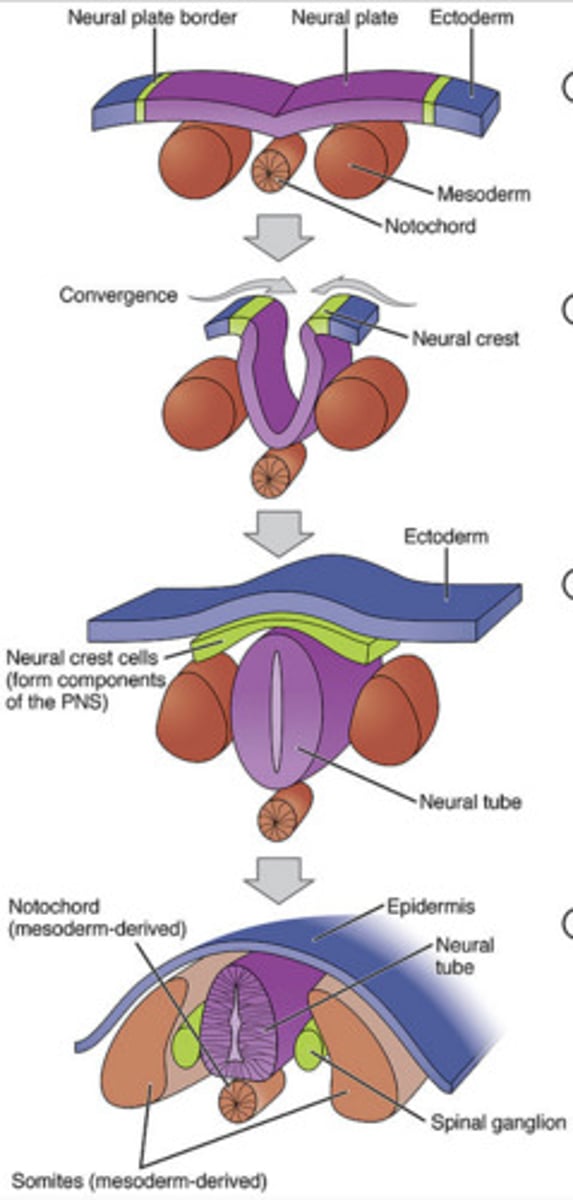
Process of neurulation
The dorsal surface thickens forming a neural tube surrounded by a fluid filled cavity
The forward end enlarges & differentiates into the hindbrain, midbrain & forebrain
The rest of the neural tube becomes the spinal cord and the ventricles (filled with CSF)
What is the last part of the brain to develop?
The telencephalon develops last and encases the diencephalon
Gyri and sulci form around week 40
Spina bifida
a disorder which the embryo's neural tube does not close properly during the first stage of pregnancy
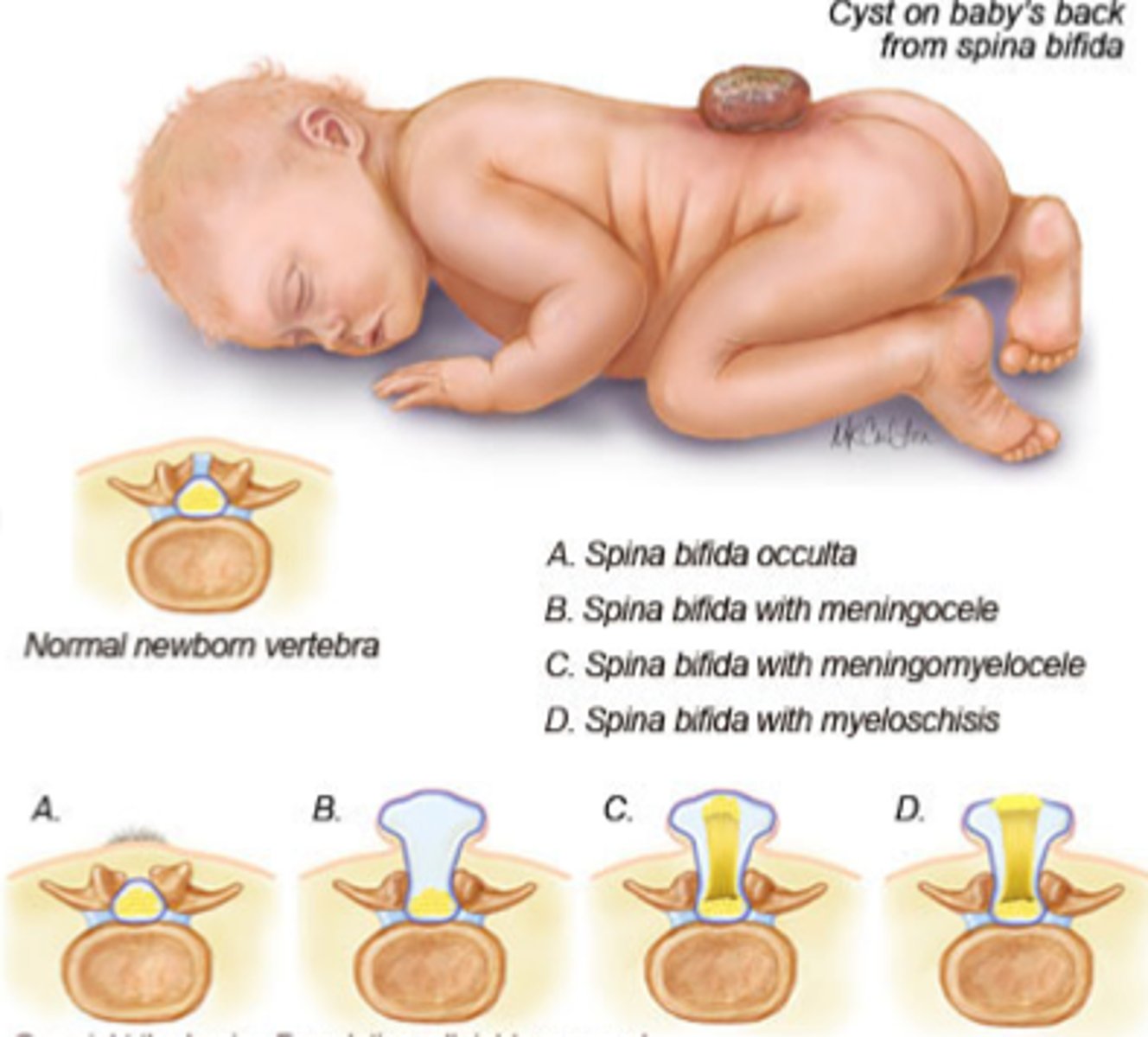
Anencephaly
congenital deformity in which some or all of fetal brain is missing
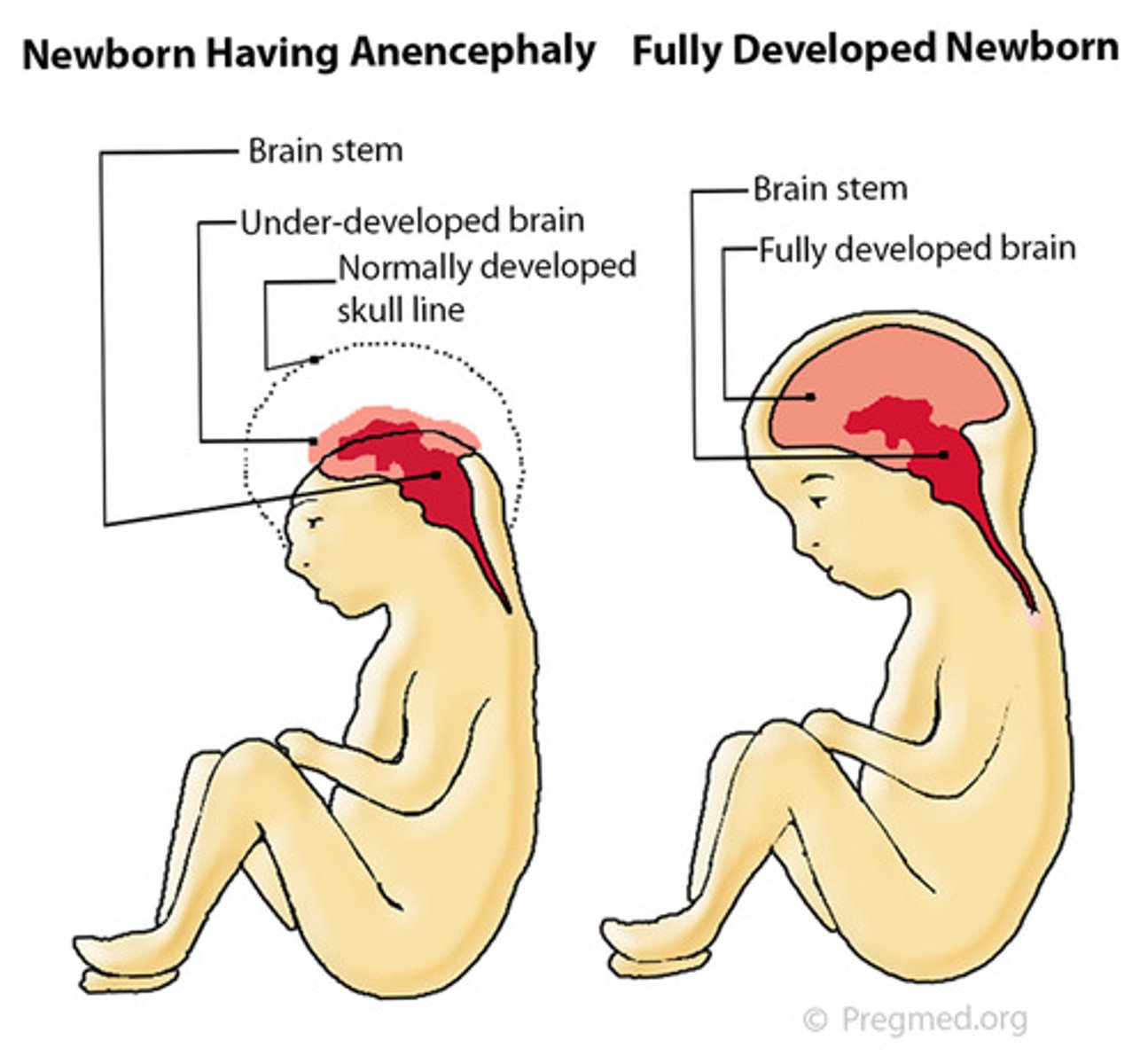
Stages of neurulation
Proliferation, Migration, Differentiation, Myelination, Synaptogenesis
PMDMS (please make delicious muffins soon)
Proliferation
production of new cells
~125,000 cells in neural tube divid, so ~250,000 new cells born every minute
Migration
the movement of neural cells along radial glial cells in the growing embryo to the correct parts of their body to determine their function
Occurs via chemical paths of guidance proteins (like Hansel and Gretel)
Growth cone
the tip of the growing axon that follows the chemical paths
Some chemicals work by attracting the growth cone at the tip of the axon and others by repelling it

Differentiation
the forming of the axons and dendrites that gives the neuron its distinctive shape and function
Myelination
the process by which glial cells (oligodendrocytes and Schwann cells) produce the fatty sheathe that covers the axons of the neurons
This process occurs throughout life
Synaptogenesis
formation of synapses
Occurs throughout life as we learn, we form new synapses and strengthen existing ones
Neurotrophins
nerve growth hormone factor, promote the survival and growth of neurons
Pruning
cell death, the neurons that do not form functional connections do not survive
The embryo produces many more neurons than it needs
Apoptosis/cell death
any neurons growing toward established connections will die
Teratogens
environmental agents that disrupt a baby's development during prenatal development
Toxic chemicals, radiation, viruses, alcohol, smoking, certain drugs
How do teratogens affect systems
Different systems have different affects to teratogenic interference due to time and type of teratogen
Fetal alcohol syndrome (FAS)
birth defects resulting from excessive maternal drinking (symptoms depending on amount of drinking)
Facial abnormalities
Cognitive issues (maintaining attention, hyperactivity, slower development)
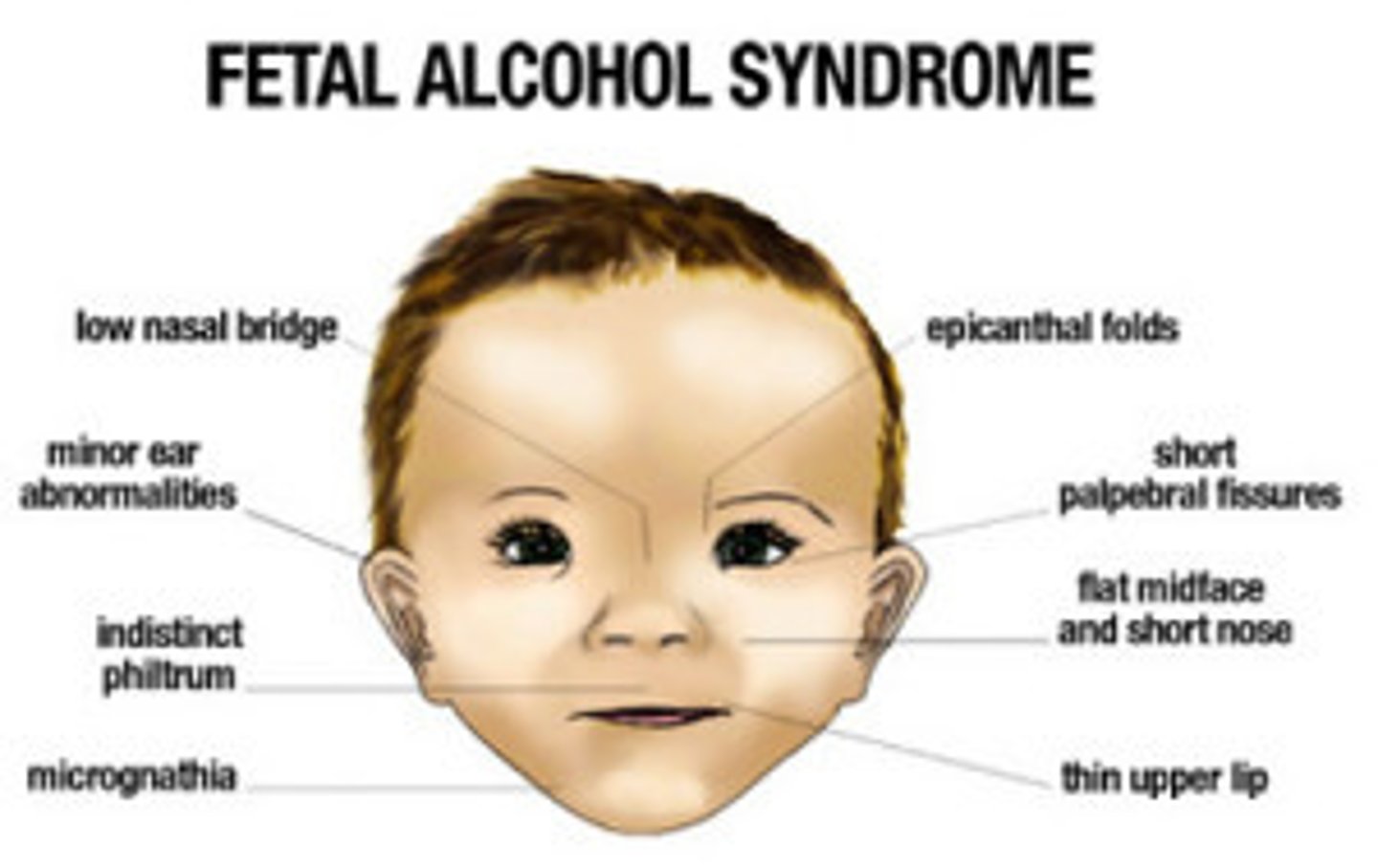
How does FAS interfere with development?
Effects the migration period as the neurons migrate past their points of destination
Suppresses glutamate and enhances GABA release
Neurons receive less excitation
Microcephaly
abnormally small head
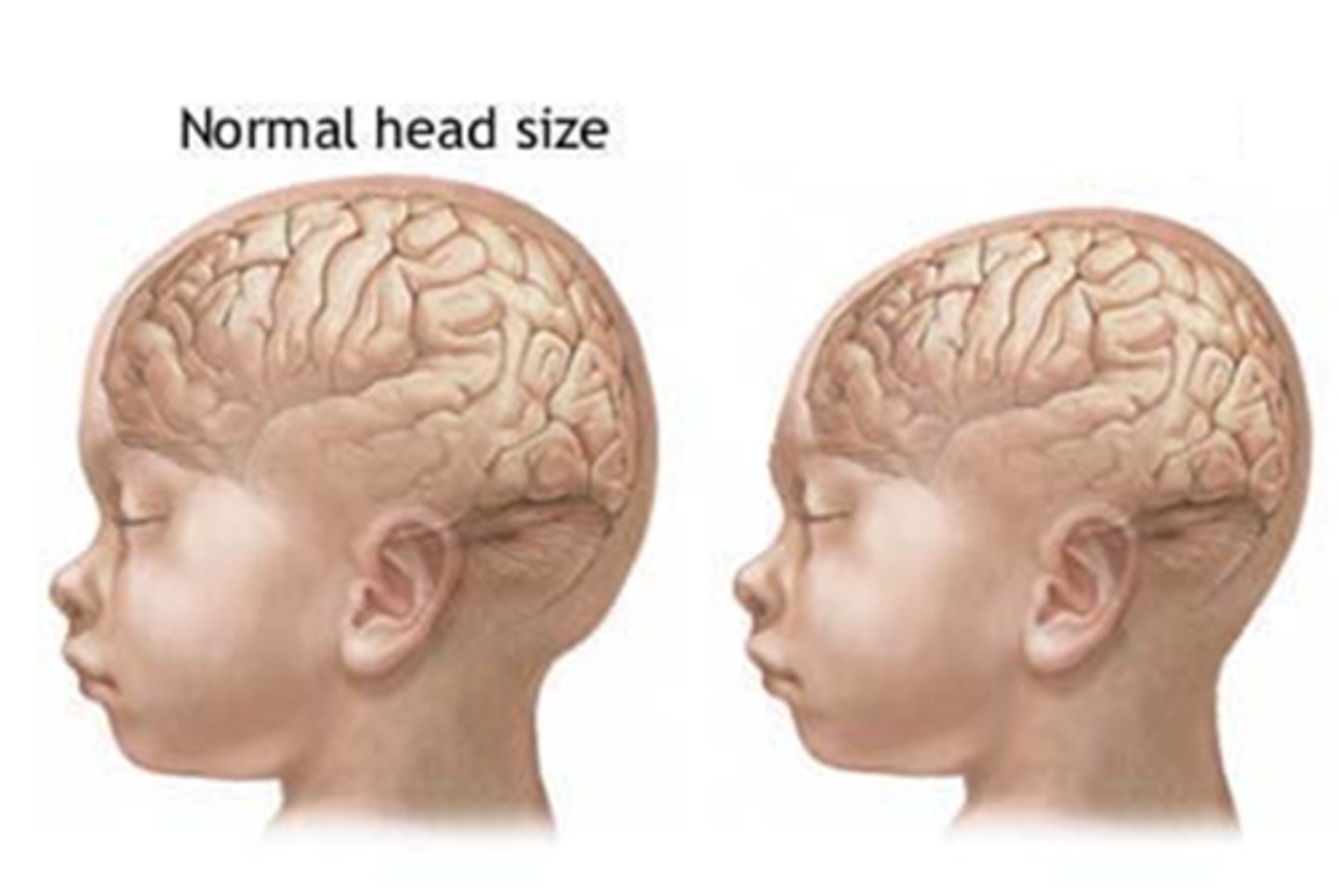
Critical period
experience or activity that is ongoing creates the condition where functional maturation connections occur
Lack of stimulation leads to a shrinking of the nervous system
Need to be exposed to stimulus that stimulate pathways or they deteriorate
Critical period for vision
Circuits connecting the eyes to the brain mostly wire up during the first few weeks after birth
Amblyopia/lazy eye
may occur when a child is more than 18 months and has a cataract that goes untreated for more than 1-2 weeks, affected by deprivation of visual field
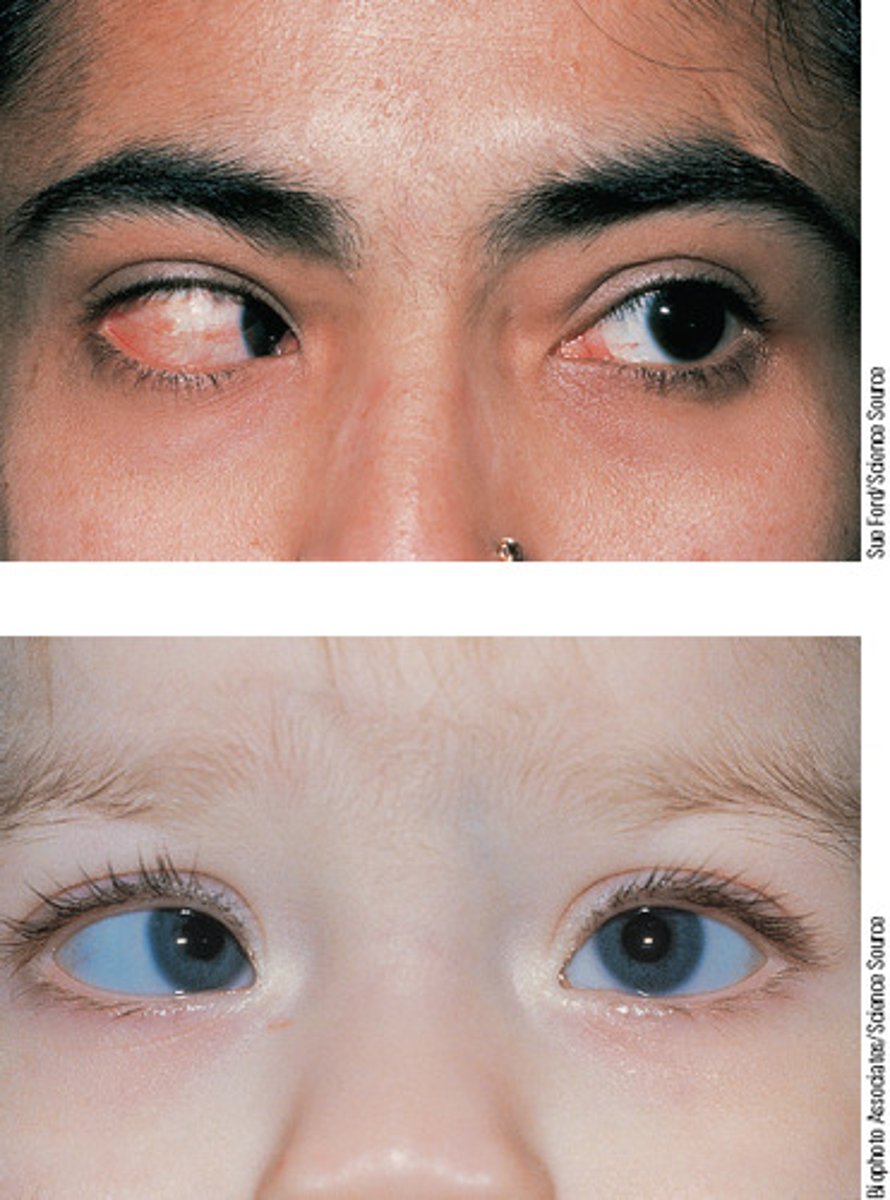
Harlow's maternal attachment studies and emotional critical period
Critical period for proper emotional development and interpersonal interaction
Baby monkeys taken from their mothers and placed with a wire mother with milk and a soft mother
Genie and language critical period
Lack of stimulating environment for language development decreased the area dedicated for language acquisition therefore Genie could never fully learn to talk
Lasting cognitive effects as a result of missing critical period for language acquisition
Synaptic pruning
elimination of excess cells and neuronal networks that are non-functional or less functional
More efficient cognitive process Too many unnecessary connections are less efficient
After ~10 years until our brain matures, brain circuits are drastically pruned
Neuroplasticity
the brain's ability to change throughout life
Types of neuroplasticity
Immature brain organizes itself
In brain injury, compensates for lost functions/maximize remaining functions
Whenever something new is learned and memorized
Stroke
occurs when blood flow to the brain is disrupted, causing brain cells to die
Infection
encephalitis, exposure to toxic substance
Degenerative disease
Alzheimers, Parkinson's
Types of damage that warrant plasticity
stroke, infection, degenerative disease, Closed/open head injuries, tumor, cerebral edema
Cerebral edema
brain swelling due to an excess of water permitted to flow into the brain extra-cellular space resulting in a loss of BBB integrity
A damaged junction allows for any molecules to pass through the BBB
the injured tissue releases inflammatory mediators that act on the tight junctions of the endothelial cells of the BBB
Diaschisis
decreased brain activity following an injury due to the resting membrane potential becoming messed up if all sorts of molecules go into the brain and neurons cannot generate electrical responses
Penumbra
area around dead cells that is at risk as the BBB is disrupted in that area
Excitoxicity
disruption of the potassium and sodium pump leading to the accumulation of potassium ions inside the penumbral area, too positive inside
toxic positivity
External mechanisms of recovery
Drugs and surgical procedures such as clot blusters to removes clots brain and returns blood to a certain part of the brain
Restore resting membrane potential
Silent / redundant neural pathway
a system of duplicated pathways in the brain that control the same function
Mechanisms of neuroplasticity
if injury occurs the primary axons will
sprout
unmask
Sprouting
new axons grows and re-establishes synaptic connection
Unmasking
silent axon becomes active
Happens faster, pathway is already there
Reorganization of cortical function
neighboring regions are co-opted to compensate for the loss of other regions
The brain reorganizes itself by forming new connections between neurons
Recovery
a combination of injury reversal and neuroplasticity
Injury reversal
Resolution of penumbra area (BBB recovers)
Resolution of diaschisis (capacity to generate electrical responses)
Resolution of edema
Neuroplasticity in recovery
Unmasking
Synaptogenesis
Neurotransmitter alterations (more released)
Rasmussen's Syndrome
chronic focal encephalitis, a rare inflammatory neurological disease in children
Frequent & severe seizures, loss of motor skills & speech, hemiparesis (paralysis on one side of the body), encephalitis, and dementia
Plasticity and experience
Brain uses neuroplasticity to enhance its function in reaction to experience
You use it, or you lose it
Experiences influences the structure of your brain
Enriched environment experiments
Skills training → increase in neuronal network density, but no change in vascular supply to brain
Exercise → increase in vascular supply to brain, no change in neuronal network density
Need both! Stimulating and challenging environments
Stimulating and challenging environments lead to
Greater synaptic density
Increased dendritic branching
Improved cognitive skills
Enhanced recovery from brain injury
Study comparing London bus drivers and taxi drivers
Taxi drivers had a larger posterior hippocampus Used for complex spatial navigation
Taxi drivers have to workout their hippocampus to figure out how to navigate each new path
What drives and stimulates neuroplasticity?
The work is what drives and stimulates neuroplasticity
"Exercising" those areas
Musician studies
Professional musicians have larger motor function and auditory processing areas (30% larger)
Blind studies, braille tactile discrimination test
Parietal activation in sighted people
Occipital lobe activation in blind people Not just for encoding of braille (tactile), but also with auditory recognition and language decoding